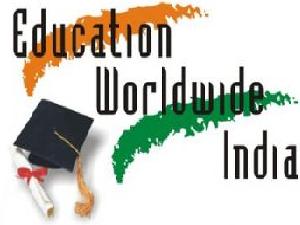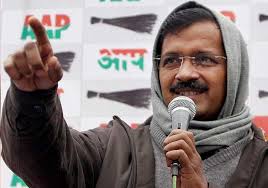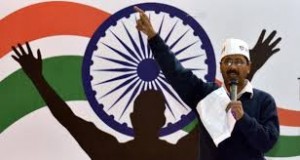India’s Education Sector: A crucial brick in India’s Prosperity and Development
India’s education dates back to institutions such as Nalanda which was home of students which used to come from across the globe, such was the highly advanced and powerful education system of India known for its supremacy throughout the world. But talking about the current state, India lacks far behind other countries in the world, most of which were far behind in civilization and education system when institutions like Nalanda was considered like Harward is considered today. This dreadful situation of India education system can be attributed to lots of factors most of which dates back to India’s 200 years long rule under the British Government which was once a golden bird but after the British rule was not left even worth a nickel. This forced India’s later governments to focus more on development and poor upliftment while focusing greatly on agriculture and later on industrial development rather than focusing on India’s education. As a result India’s literacy rate till date stands at only 75% while countries like China(95%), Brazil(96%),South Africa(94) which are also emerging economies like India are far ahead of India in terms of education. Not only that, even countries like Sri lanka, Taiwan, Tajikistan, Vietnam which are way behind than India in terms of economic development are also way ahead of India in education clearly indicating the state of education in India. To provide you with more shocking statistics, India has highest no. of illiterate adults at 287 million amounts to 37% of the world’s total.
But things have improved over the past two decades as India’s literacy rate has improved from 46% in 1991 to 75% in 2011, also the number of institutes offering higher education is much more in India when compared to China and the US. A latest report by Ernst & Young states that the number of institutes offering higher education in India is 44,668. Of that, 33,668 offer various degrees and the rest offers diplomas. The total number of institutes in China is 4,192, while in the US, the number is 6,500.This monumental change can be attributed to the Liberalization, privatization and globalization policy being implemented by India in 1991 as the focus has shifted from public sector to private sector as private institutions now account for 64% of the total no. of institutions in India an increase of 48% from the decade ago.Also India which historically restricted foreign higher education providers from establishing institutions in-country has recently have relaxed regulations in that regard. This move has increased competition and has provided for globalized education system on par with the best in the world.
Despite all these efforts India does not have many world class universities and only Indian Institute of technology consistently makes it into the Times Higher Education University Rankings of the 400 top universities and colleges. Further, employers state that less than a quarter of engineers and MBA graduates in India are employable after graduation showing the low standard of quality of education in India. The major challenges faced by India in the higher education sector are a lack of trained faculty; underfunded research facilities, libraries, and information technology systems; low quality research; and politicization of staffing appointments. In addition to these, there are widespread regional, rural-urban, and gender disparities in student enrollment where quota systems are overpowering the merit system for selection of the candidates leaving out rightful candidates with good quality education.
Apart from this, public institutions which still contributes to 36% of total no. of institutions India and which are majorly responsible for rural education have serious teaching quality issues wherein the recent research has shown that more than half of fifth graders in rural government primary schools is three grades behind.Also many cases have come to surface wherein the teachers of these institutions have failed to failed to answer basic questions such as Who was Pythagoras ?, How do you spell Mathematics (questions were asked from maths teacher) etc. and have been taking bribes from students to pass them in examinations explaining why most these students are unemployable. Reasons attributing to this dreadful situation are outdated curricula, inadequate teacher training, and poor infrastructure as many schools are underfunded.
Also, although India has made huge economic strides over past two decades one-third of its population still lives below the poverty line, as a result children faces issues like malnutrition, pressure to earn an income for their families which significantly degrades their efficiency and output which ultimately led to high dropout rate of these students which at this tender is unable to cope pressure of both education and earning for families. Another concern for India is vocational and skill training being provided to people involved with industries like textile, chemical, manufacturing etc. where India again lags far behind other countries with only 10% receiving any form of skill training impeding the growth India’s industrial growth due to shortage of acute manpower for these industries where whatever employees are not efficient and hence reducing the desired output and increasing the total cost per unit of goods being manufactured making Indian goods costlier compared to that of other countries like China, Taiwan, Indonesia etc.
India today compared to major economies of the world like Japan, China, Russia etc. whose population are aging has highest no. of young people in the world .With such high population, cultivating an educated workforce offers many social and economic opportunities for India as a whole. But, currently, only 17.9% of India’s young population is enrolled in higher education. Hence, if India has to become a major economic superpower as it aspires to in the future it has to increase significantly its investments in its education sector and lot of policies have to be formulated keeping education in focus.
New Indian government under the leadership of Mr. Narendra Modi unlike its predecessors is putting special focus on revamping the education system of India .It has formulated the National Education Policy to boost quality, research and innovation in the education sector . Mr.Narendra modi has already shown his eagerness to improve education system during his stint as a chief minister of Gujarat where he had significantly improved the education system. Some of the key steps which central government plans to implement in this direction are:-
- Including skill enhancement and entrepreneurship in the syllabi at the school level, setting up of 2,500 multi- skilling institutions , and setting up of institutes for entrepreneurship development in various centres including upcoming smart cities .
- The Government of India plans to open a national vocational university that will administer and control all Industrial Training Institutes (ITIs), a move to improve standards and bring uniformity among the schools that supply workers to the manufacturing sector.
- A memorandum of understanding (MoU) has been signed between Foundation for Innovation and Technology Transfer (FITT) and Security Printing and Minting Corporation of India Ltd (SPMCIL). This has been done to enable collaboration on research, training and professional development and exchange of technical expertise in areas of mutual interest such as material sciences and testing capabilities.
Apart from these various government initiatives, steps have been taken to bolster distance learning besides focusing on new techniques like e-learning and m-learning. Presently, Government of India has taken several steps including opening of IIT’s and IIM’s in new locations as well as allocating educational grants for research scholars in most government institutions. With steps like these India’s education system promises to grow in significant manner to support India’s ambition to become an economic superpower in the future.
Click here for government certifications
 Stay Ahead with the Power of Upskilling - Invest in Yourself!
Stay Ahead with the Power of Upskilling - Invest in Yourself! 





9 Comments. Leave new
well explained about the condition of education sector in India.
thank you for reading and appreciating my article….
I totally agree with you Anuj !
thank you…..
very informative and nicely written 🙂
good job Arun 🙂
Completely agree with you. Superb article.
Superb article! Very well written
It is time to change the eductaional concepts in India. sad to say but research chances are mere in India and real technologists are very few though there is a large no. of grads.
Very well researched 😀
GOod work 😀
education sector in India 😀
great work